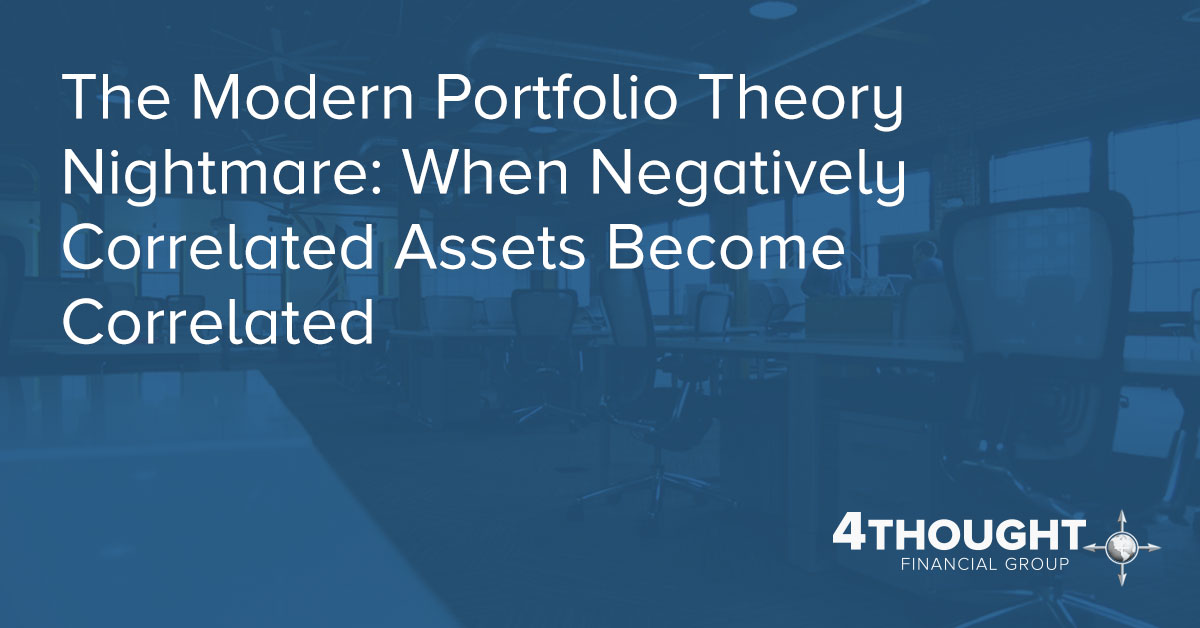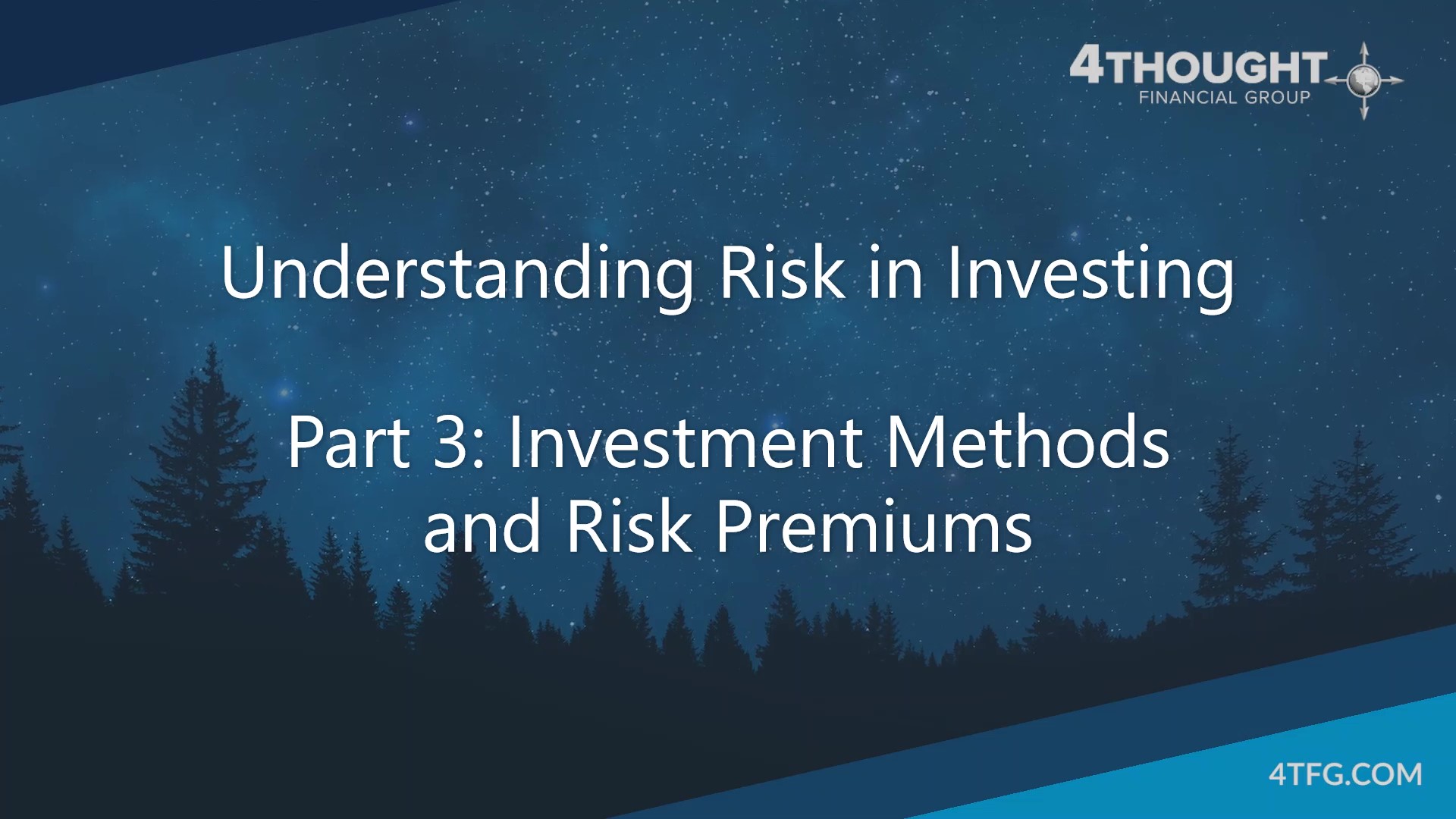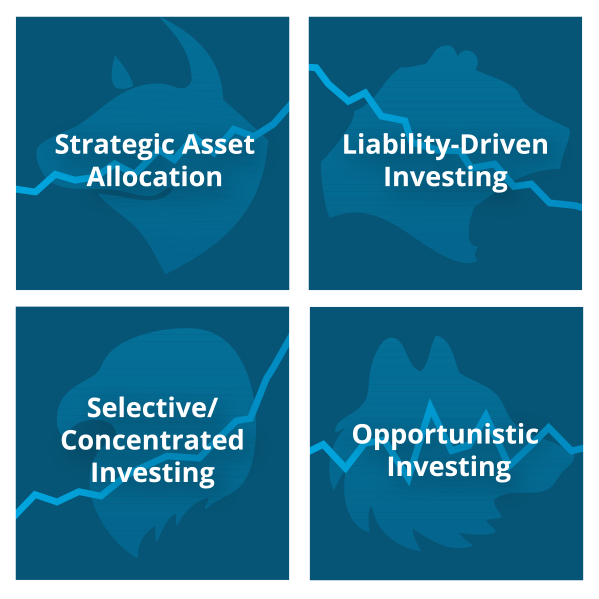
The defining principle of Modern Portfolio Theory is that by including assets whose prices generally move in opposing directions in response to stimuli in a portfolio, one can reduce the volatility (or risk) of the overall portfolio over time, while still maintaining or increasing the average rate of return. Nearly all serious institutional asset managers have applied this principle in one form or another over the last thirty years, since its original discovery and description by Harry Markowitz and his contemporaries.
The theory goes that by diversifying a portfolio through the inclusion of a variety of assets whose prices exhibit low or negative correlation with the remainder of the assets in the portfolio, and allowing underlying economic growth gyrations to take their toll, superior risk-adjusted returns can be achieved. This will increase the probability that a client will achieve his or her investment objectives and life goals. In theory, the gentle give and take of opposing price movements over time results in a smoother, more tolerable ride for investors, greatly reducing the risks associated with trying to time the market or the need to access money prematurely. This is the fundamental idea on which all talk of diversification amongst advisors and the media is based.
...not all money managers are created the same.
The MPT methodology has become a near panacea when it comes to institutional-style asset management for high net worth individuals, institutions, and even for the average American investor. In fact, the widespread acceptance of Modern Portfolio Theory principles has resulted in a degree of commoditization in the asset management business, leaving many money managers with little competitive differentiation from the remainder of the pack. However, not all money managers are created the same. Indeed, some can apply the fundamental principles of MPT with far more alacrity others.
But regardless of how talented, diligent, and disciplined a manager and his/her asset allocation methodology may be, there are instances in the real world in which all of the basic tenets of Modern Portfolio Theory lose their theoretical luster, and the portfolio drops like a rock, exhibiting similar performance to a non-MPT portfolio. Although these periods are rare and have historically been very brief, they do exist, and you may have recognized that we are experiencing one of them currently. The problem arises when historically non-correlated assets suddenly become highly correlated as measured over brief periods.
When a correlation matrix is constructed (a table that shows the measured degree of relative historical price movement with a series of other assets – showing numbers ranging from -1 for inversely related to +1 for a positive relationship) the numbers shown in the table represent an average measurement of the price movements during the selected time period. During shorter time periods the correlation measurement could be substantially different and could even be the inverse of the long term historical measurement. Correlations change over time depending on the time period you are measuring. In fact, one could even measure the volatility of correlation in addition to the volatility of price movements. After all, one must remember that correlation is very different from causation. Correlation can be thought of as a means to measure the historical likelihood that a price will move in a certain direction (+ or -) relative to another asset price, whereas causation implies that prices always move in the designated direction. Therefore, by definition, correlation less than +1 means that at least some of the time, the two asset prices will not move in the predicted direction. To further extend this, even if the historical correlation is +1, this does not mean that the asset prices will move the same way in the future. It only means that they have done so in the past. Correlation does not necessarily go hand-in-hand with causation.
If we look at the cycles of the various asset markets from a mathematical perspective, as if they were waves all moving randomly (or even non-randomly but with zero correlation), on an infinite time scale there would eventually come a point when all of the waves are dropping (at a trough) or rising (in a crest) in the same place at the same time. This is one reason that actual "rogue waves" exist in the world’s oceans, which have the potential to wipe out entire fleets and oil rigs. (Note that this analogy is imperfect because economic/market changes can be structural as well as cyclical). One could theoretically determine the probability that such an unlikely event would occur by constructing a probability distribution curve and measuring the standard deviation and the areas in the tails of the curve, looking at "higher order" events. What we are experiencing right now in the world’s markets might be considered one of these higher order events. They do not take place very often, but when they do, one tends to notice.
Although one could argue that the "perfect storm" of asset price declines and heightened price movement correlation experienced recently has a single root cause in the credit crisis and the US subprime mortgage debacle, it is more likely that a confluence of factors have converged to produce our Modern Portfolio Theory nightmare scenario. Take heed of the following incomplete list of pertinent factors:
- A lack of natural market liquidity
- Tightening credit availability
- Rising medium-term inflation expectations
- Expectations of a potential long term Japan-like deflation scenario for the US
- Alternative predictions of "stagflation"
- Wildly fluctuating commodities prices
- Stagnating and faltering US economic growth
- A spreading global economic slowdown
- Recession in some locales with expectations of recession in most locales
- Manipulation of the markets by government intervention
- A series of catastrophic weather patterns
- An impending US election
- A knee-jerk movement towards international trade protectionism
- Irrationally short-term investor outlooks
- A preponderance of excessive portfolio over-weightings and pure speculative investing approaches
- The rise of authoritarian states due to oil wealth
This list could go on and on. You will notice that while some of these factors are related, others appear totally independent of each other. The problem is that when you throw them all into the mix, not only is there is no way to accurately and consistently predict a price movement (which is almost always the case), but because of the complex and dynamic interrelation of these factors, there doesn’t seem to be any relationship of current short term asset correlations with the historical averages. Once again, history is not predictive. This is partially due to the complexity of the factor relationships, but the most unpredictable twist thrown into the mix is, of course, human behavior.
For example, stock prices and commodities prices generally exhibit negative correlation because commodities are a factor of production for many companies. (In practice, this actually depends on where the commodity falls in the value chain of the company). For the several months leading up to the end of August, commodities had acted as an excellent hedge against negative overall stock price movement. But in the last several weeks, the two assets have become highly correlated. Whereas investors previously viewed commodity drops as positive news for the broader stock market, more recent commodity price drops have been perceived as indicative of slowing global demand growth and slowing economic growth. Hence, stock prices have adjusted downwards as well. Although the situation is a bit more complex than that, as different stocks react in different ways, essentially what has happened is a change in human perception of what is driving the drop in oil prices. This price correlation convergence has occurred with other assets such as financial stocks, municipal bonds, REITs, emerging market equity, and nearly all other assets.
It appears that at least for the last several years, the human race has been operating under erroneous risk assessment pretenses.
The largest part of the overall problem stems not from uncontrollable predetermined factors, but from human behavioral inclinations and a failure to accurately assess risk. It appears that at least for the last several years, the human race has been operating under erroneous risk assessment pretenses. Until this is amended, the problems associated with high asset price correlation will likely persist as we go through our collective period of self reckoning.
So if all asset prices are declining, where can one hide? Is it in cash? Perhaps. But cash may be a poor place to hide, especially now, as one is assured of losing value on assets due to inflation (real interest rates are currently highly negative). In addition, by moving to cash, clients will almost invariably miss out on the opportunity for a market turnaround, as the market is very rarely timed as easily as one might wish. You may also rack up transaction costs by moving clients to cash and later shifting back into securities. Unless your clients need the money for specific expenses in the immediate future, it is unlikely that playing the wholesale cash card will yield better long term results. In fact, as an advisor or generalist overall portfolio allocator, in most cases you should avoid playing the market timing or tactical game altogether, and leave that type of management to specialist portfolio managers that you might hire to fill out your larger allocation.
If we are seeking absolute returns in this environment, they are possible to achieve, but not without great risk, and a healthy dollop of luck (to go along with the skill). Portfolio managers need to take enormous consolidated bets on long shots to reap meaningful absolute returns in this environment. One should be judicious about using this type of management and not overweight it too greatly as a portion of the overall portfolio.
As it turns out, the most historically reliable solution is adherence to Modern Portfolio Theory and strategic asset allocation for the largest portion of the portfolio. In fact, this is the only methodology that many studies have shown (with statistical significance) to have a positive effect on the long term risk-adjusted returns of client portfolios. Even in the nightmare scenario of highly correlated portfolio assets, differentiation in the movement of prices still exists, meaning that all things being equal, a well-managed strategic portfolio allocation will outperform most other non-diversified portfolios on a relative basis.
We cannot assume that the intentions of Modern Portfolio Theory will always pan out the way they are planned. But we can be assured that it is still the most reliable way to manage a portfolio, until someone comes up with something better. The nature of the universe itself requires that there will always be potholes along the road. Our job as advisors is to lead our clients safely across them, even if the pothole becomes a canyon.







Leave a Comment